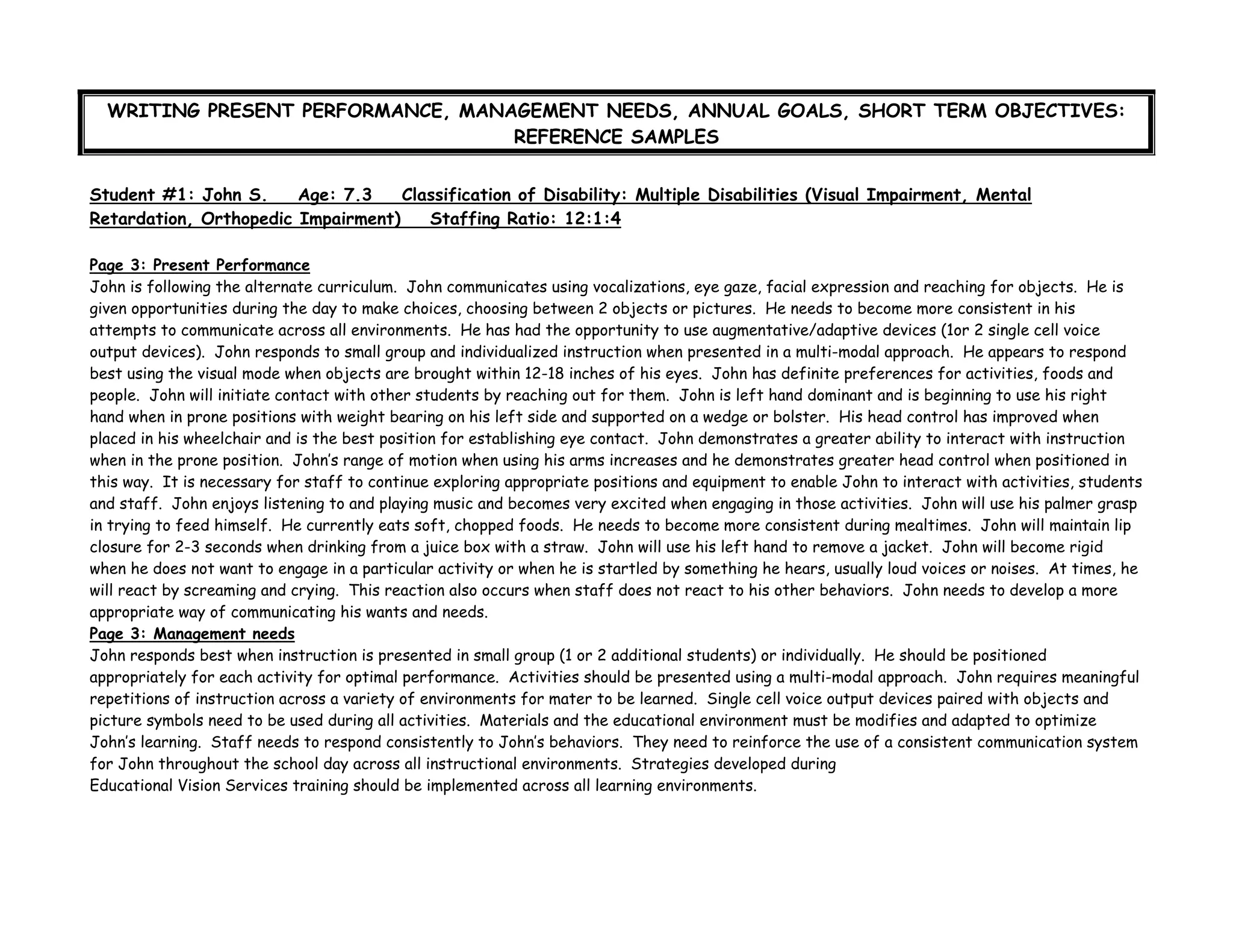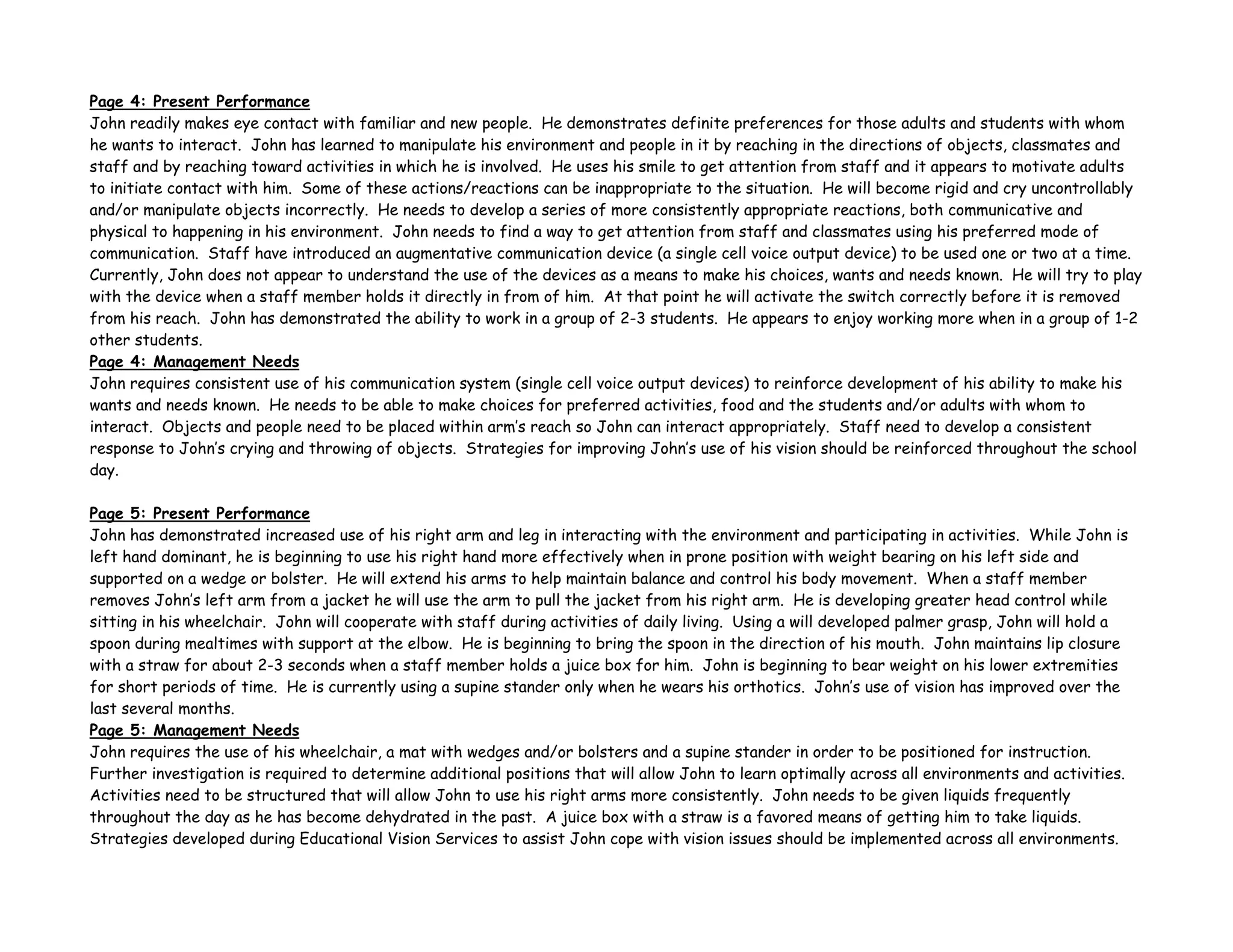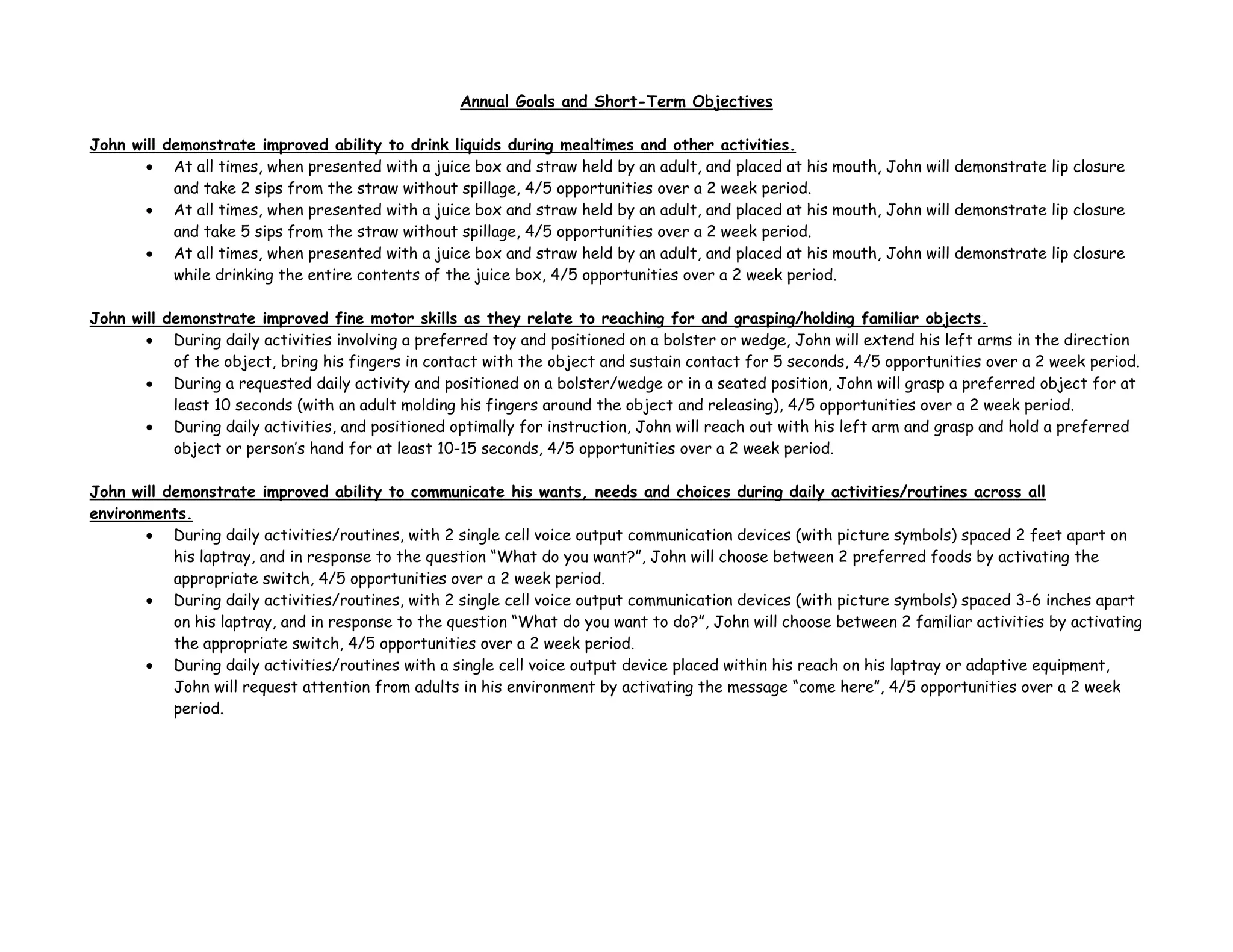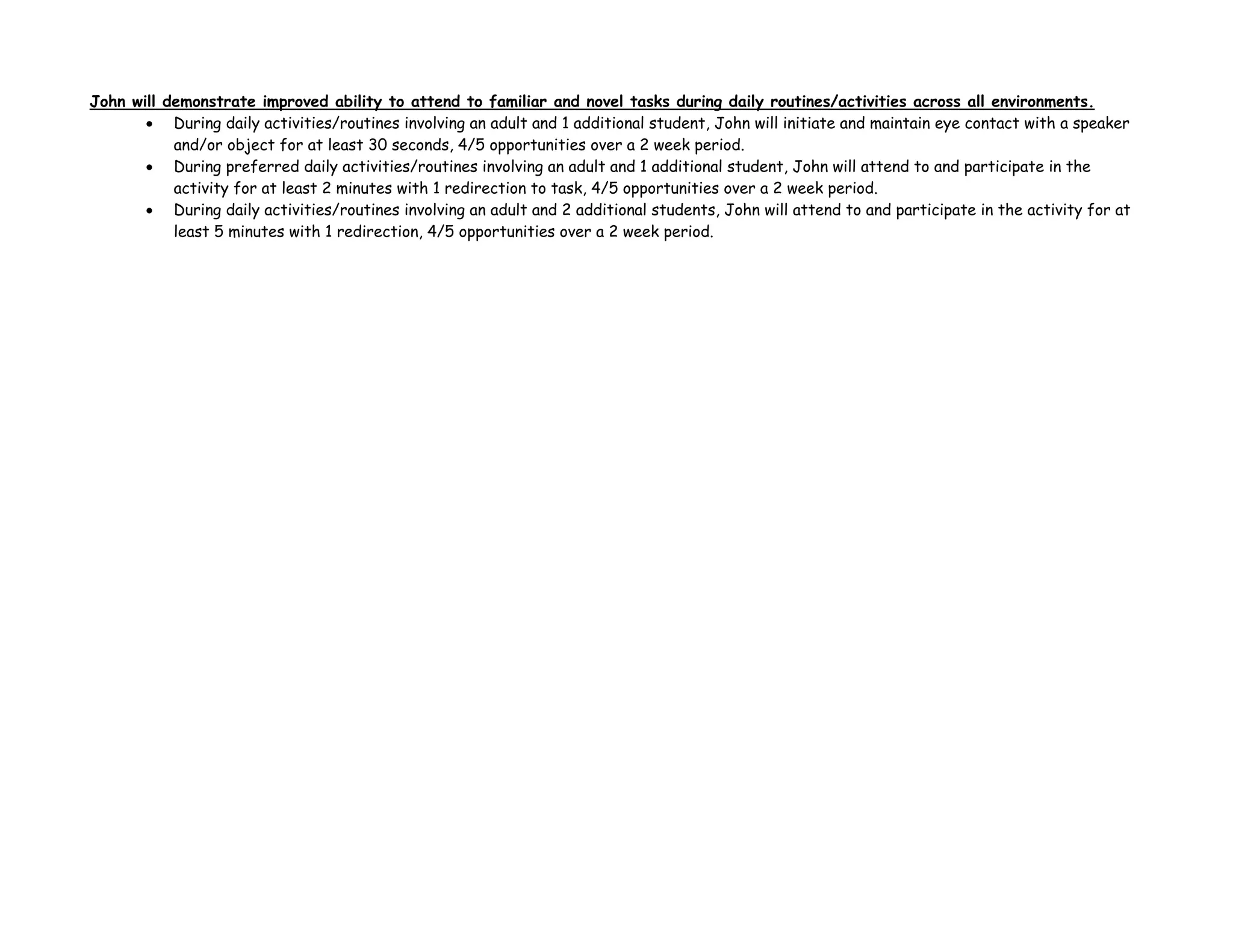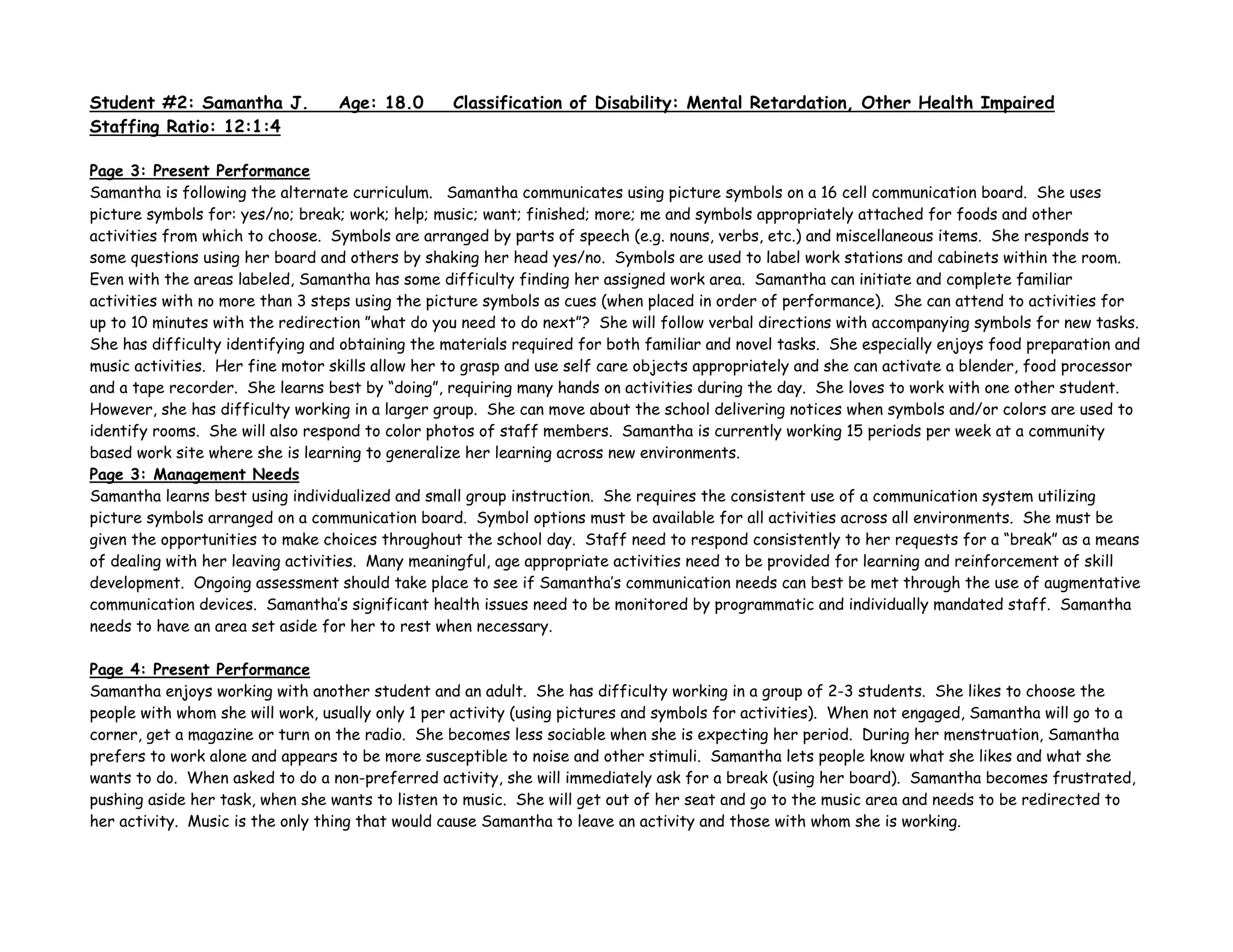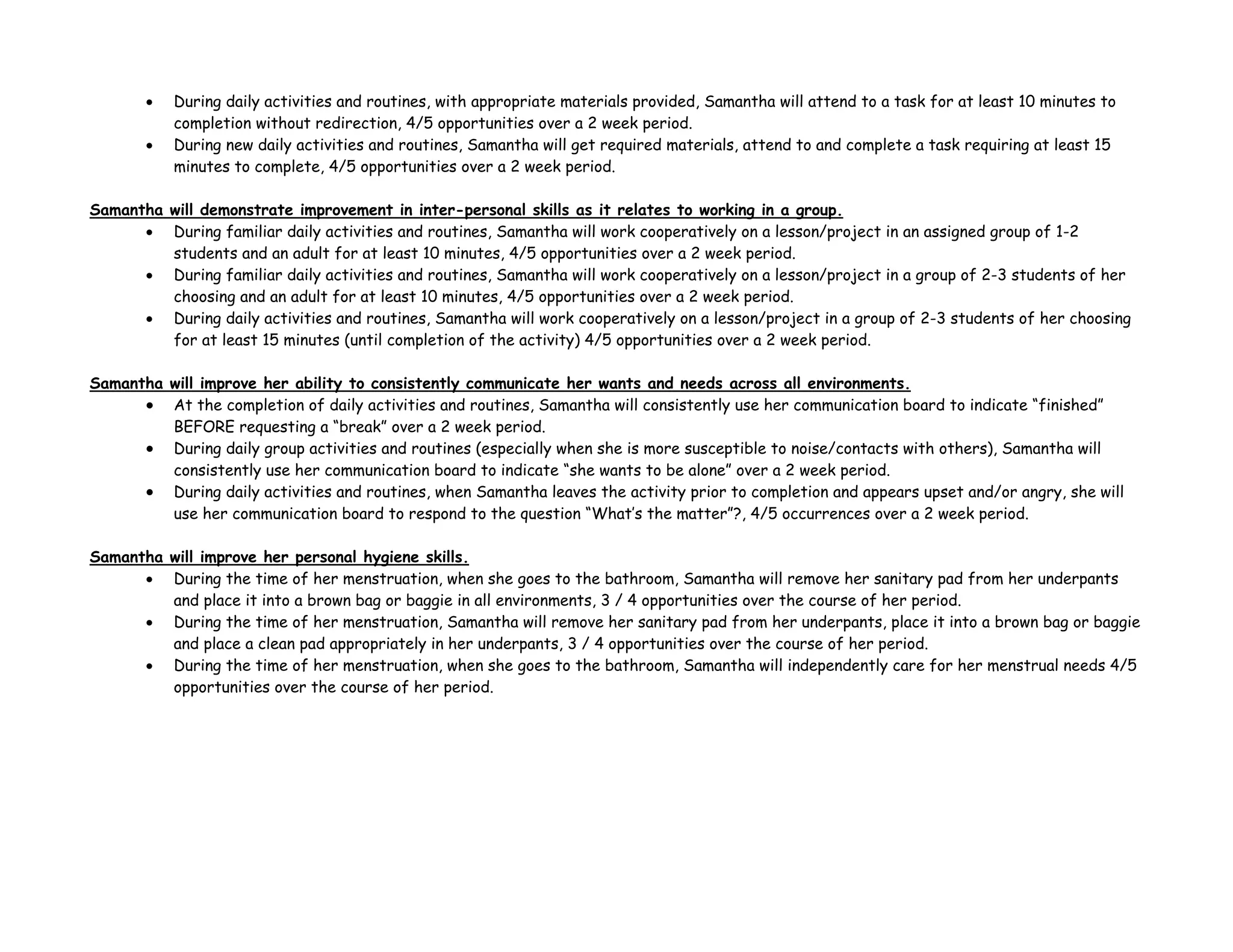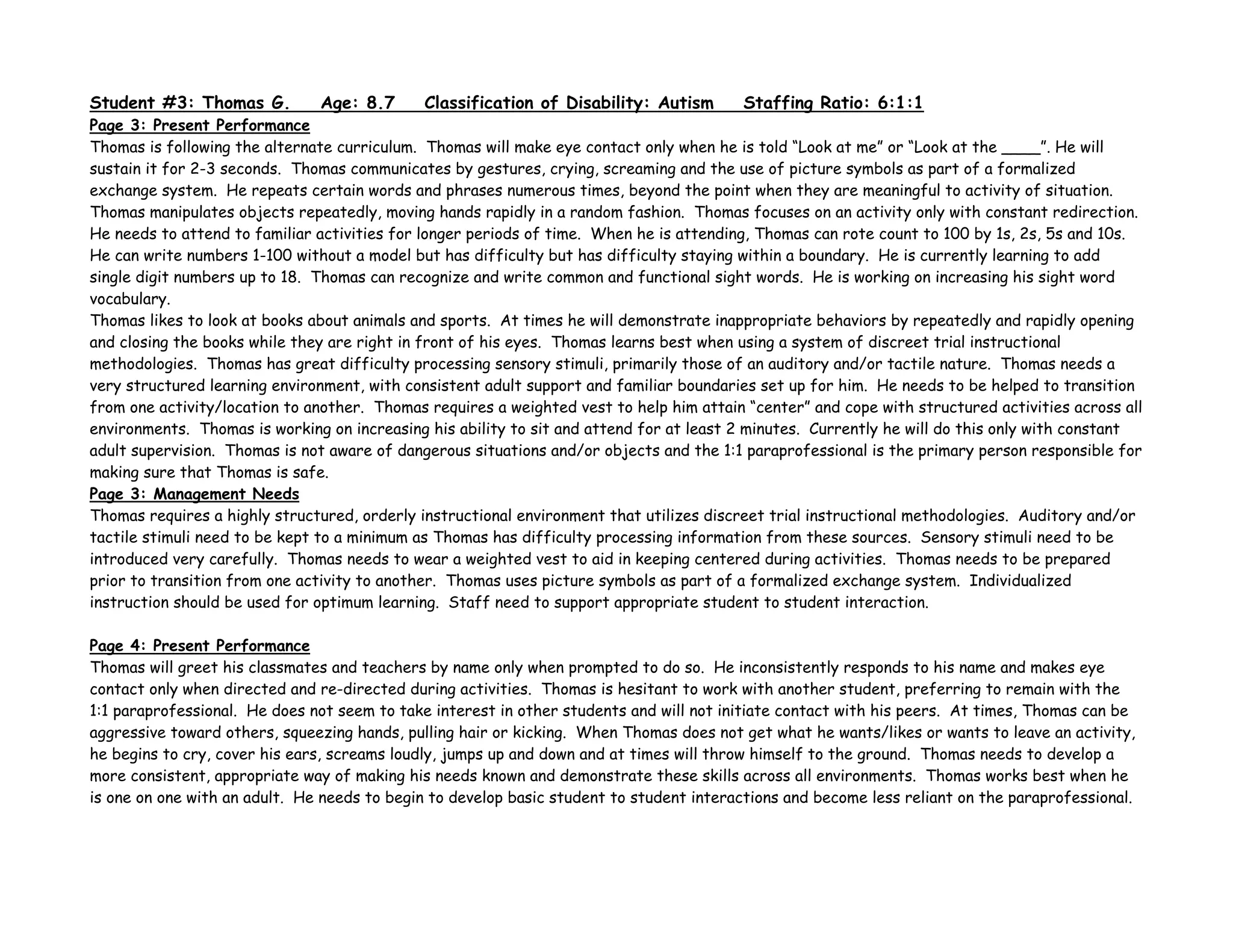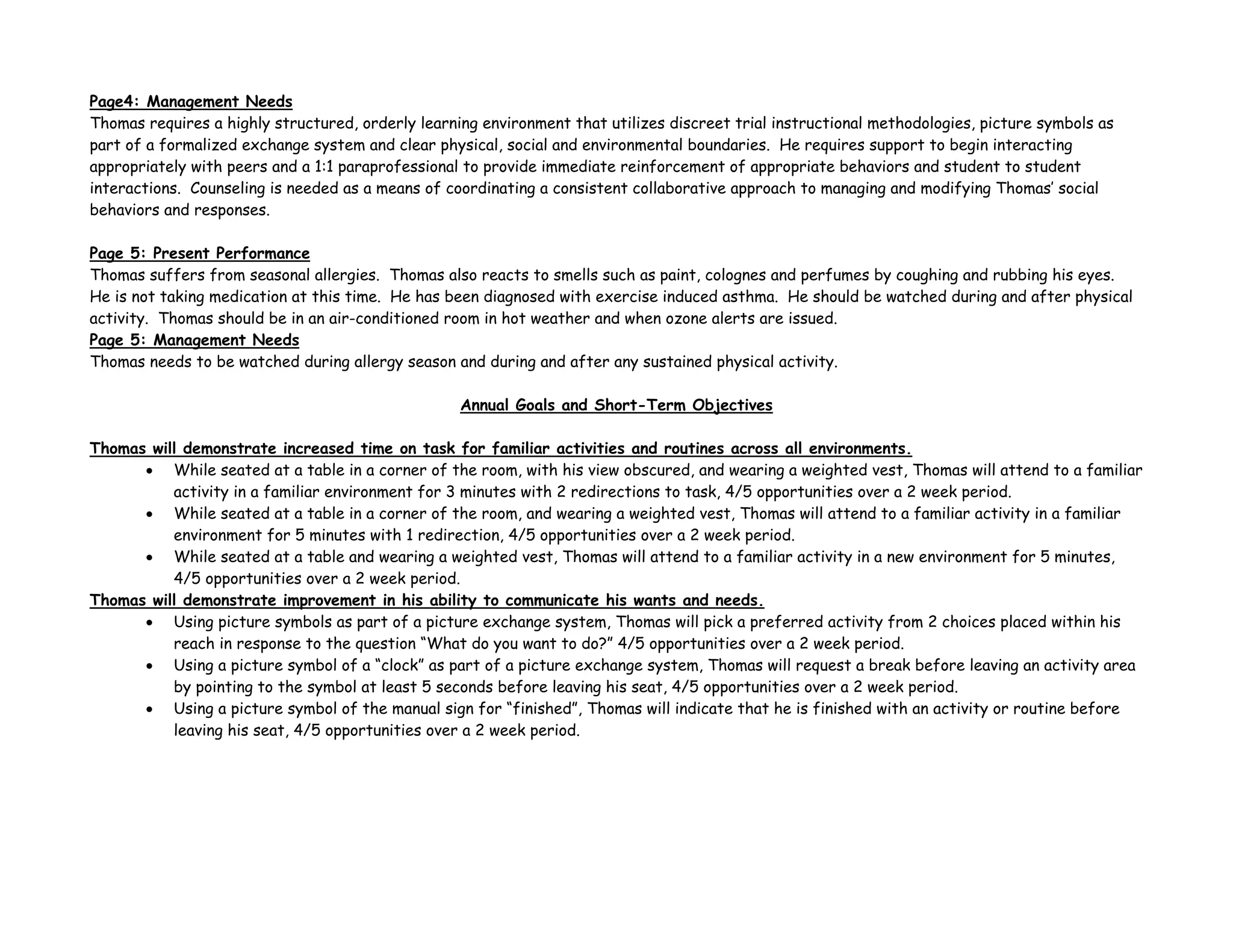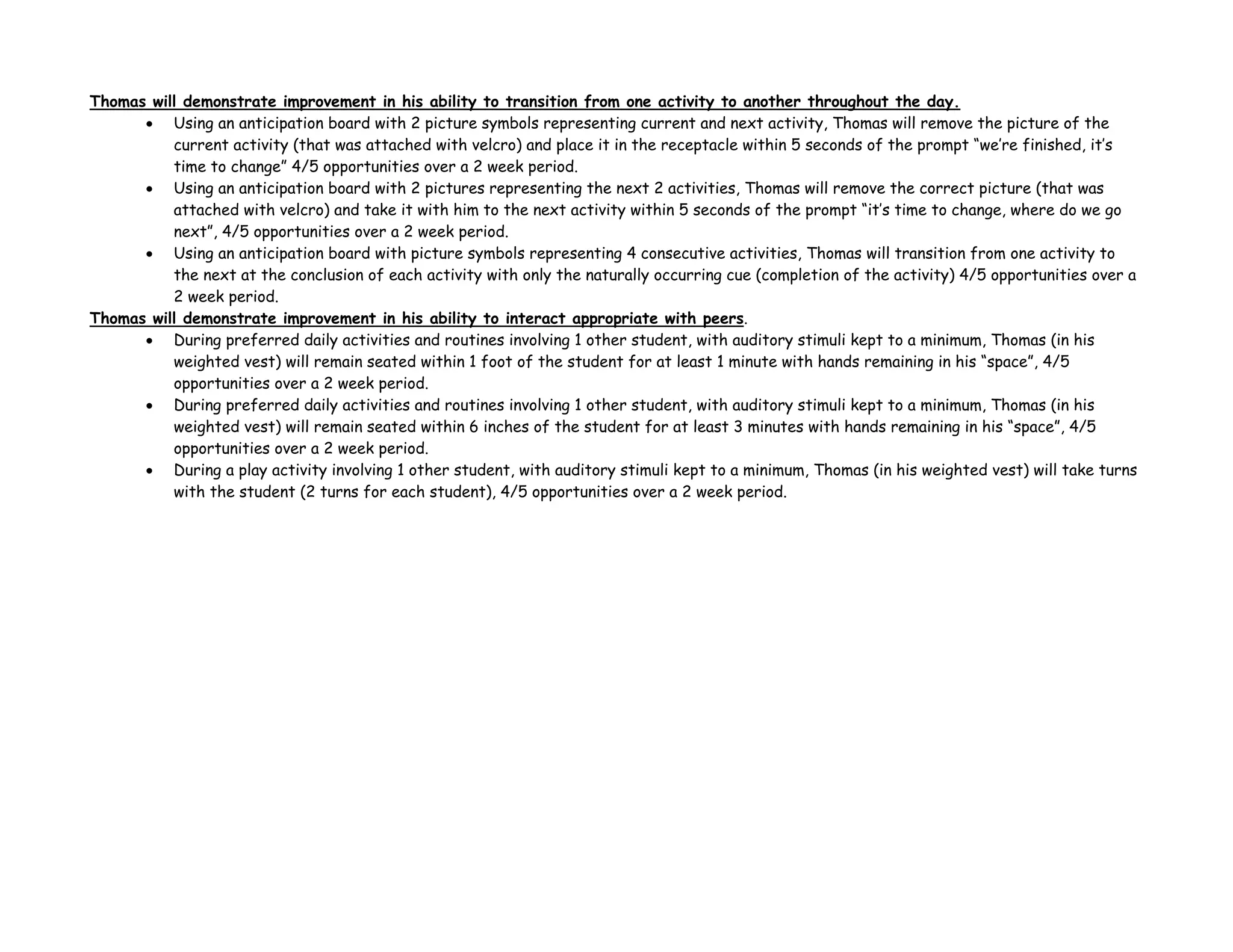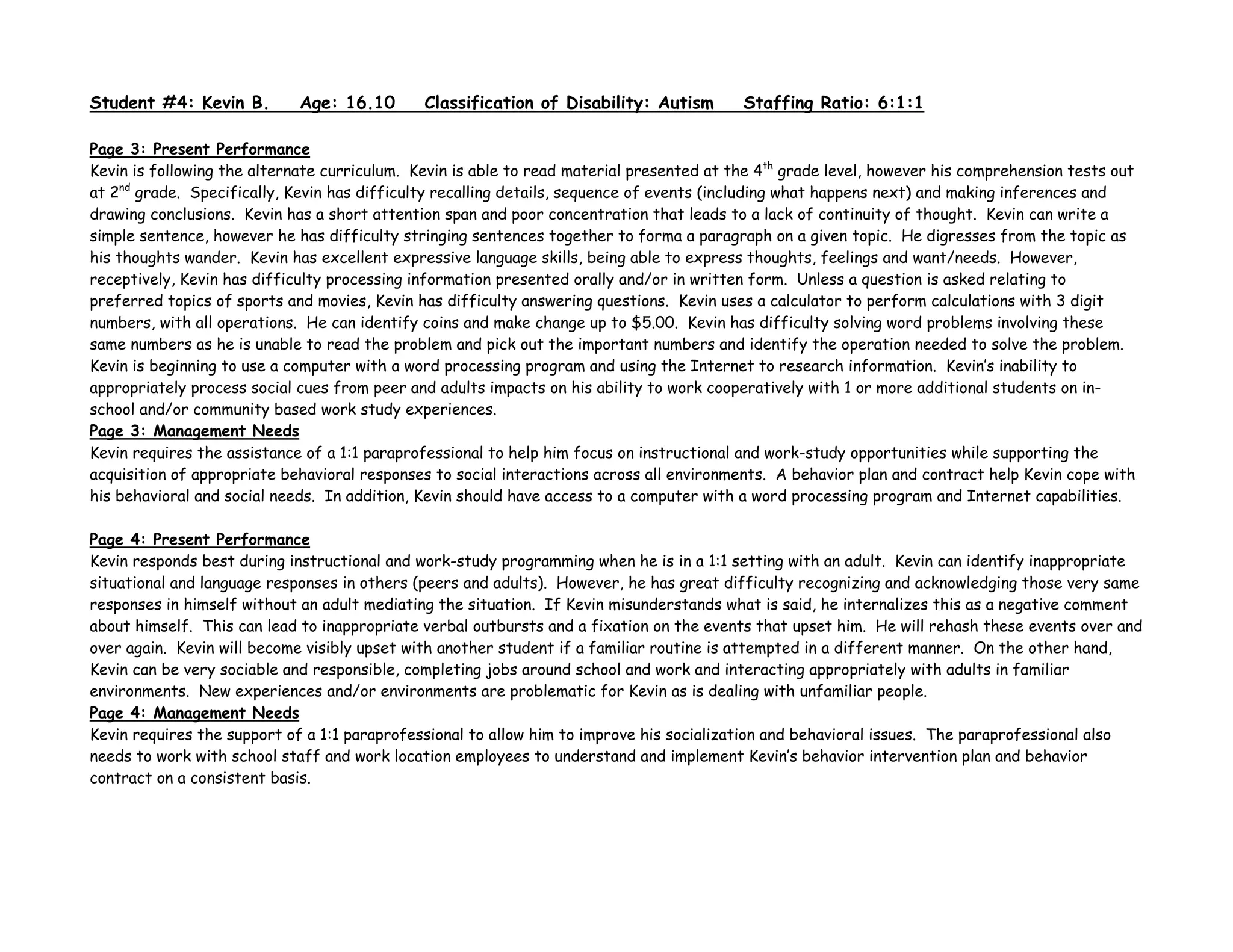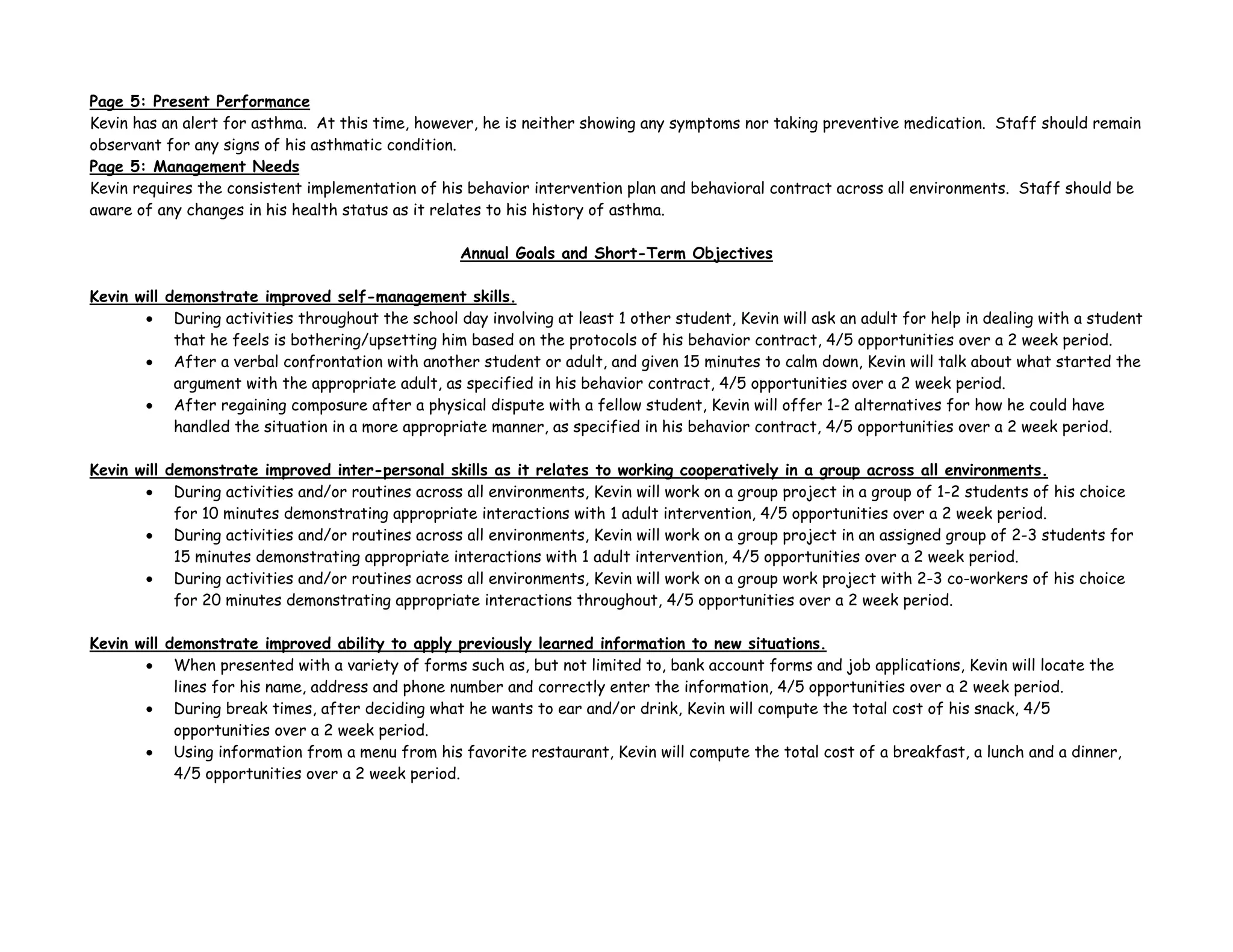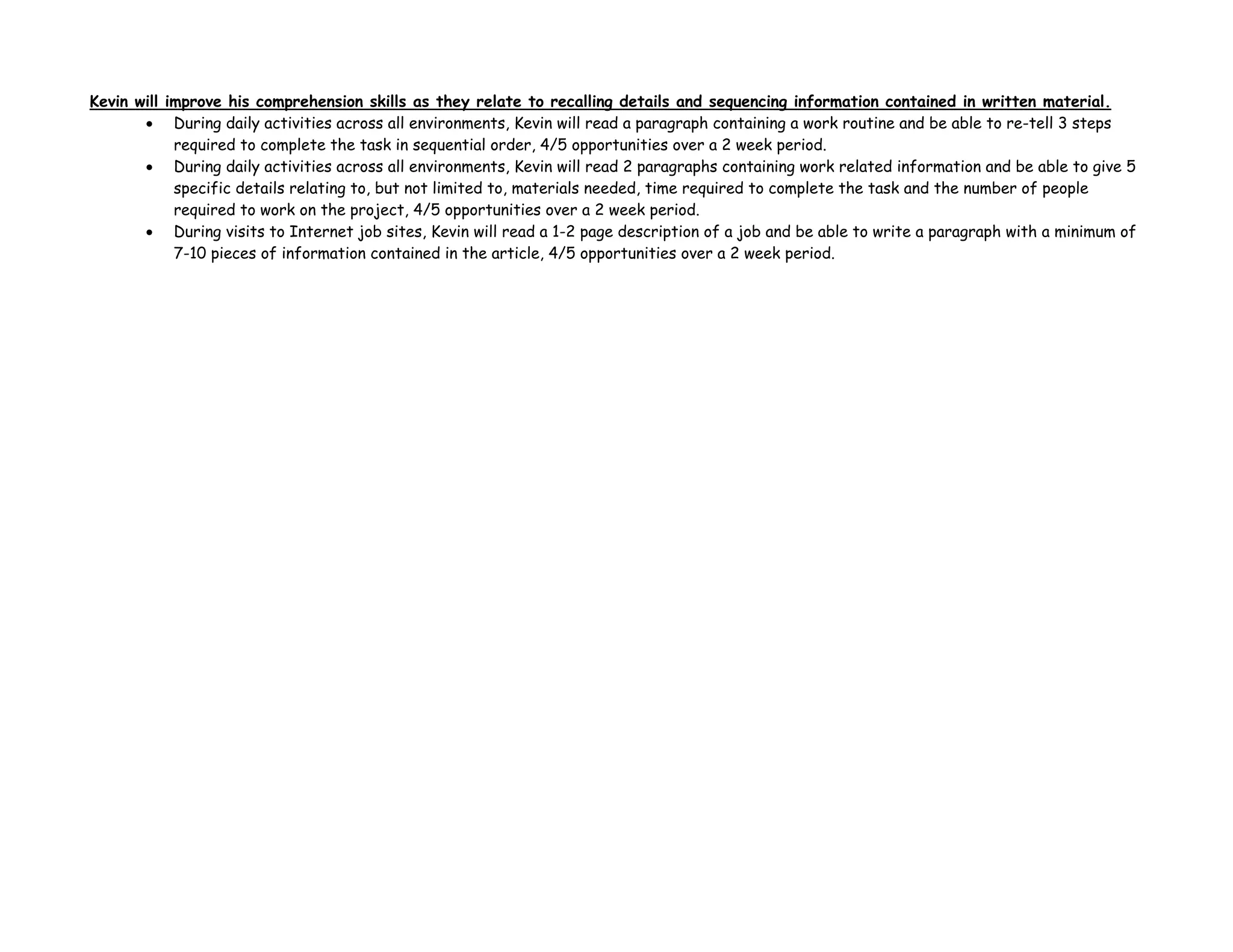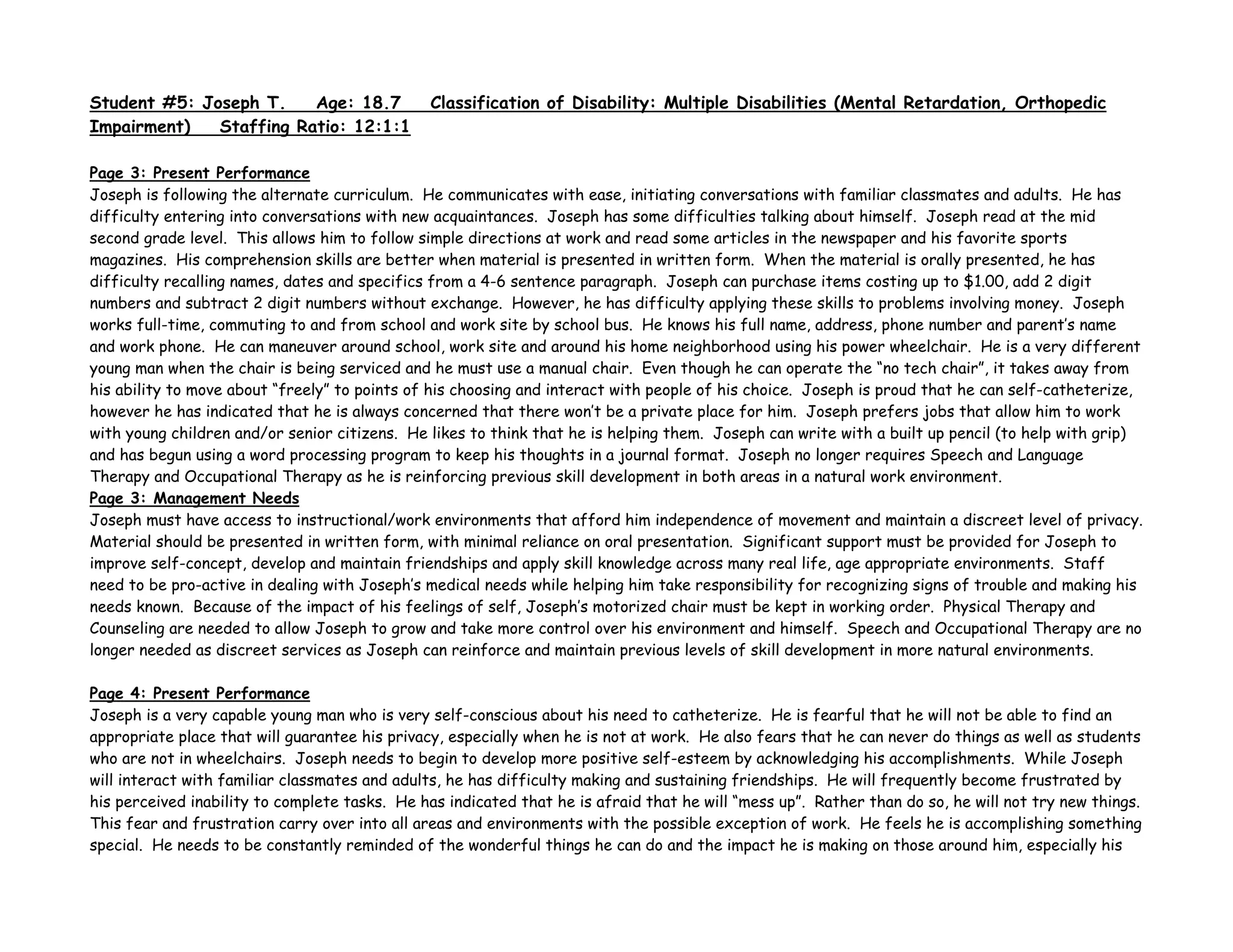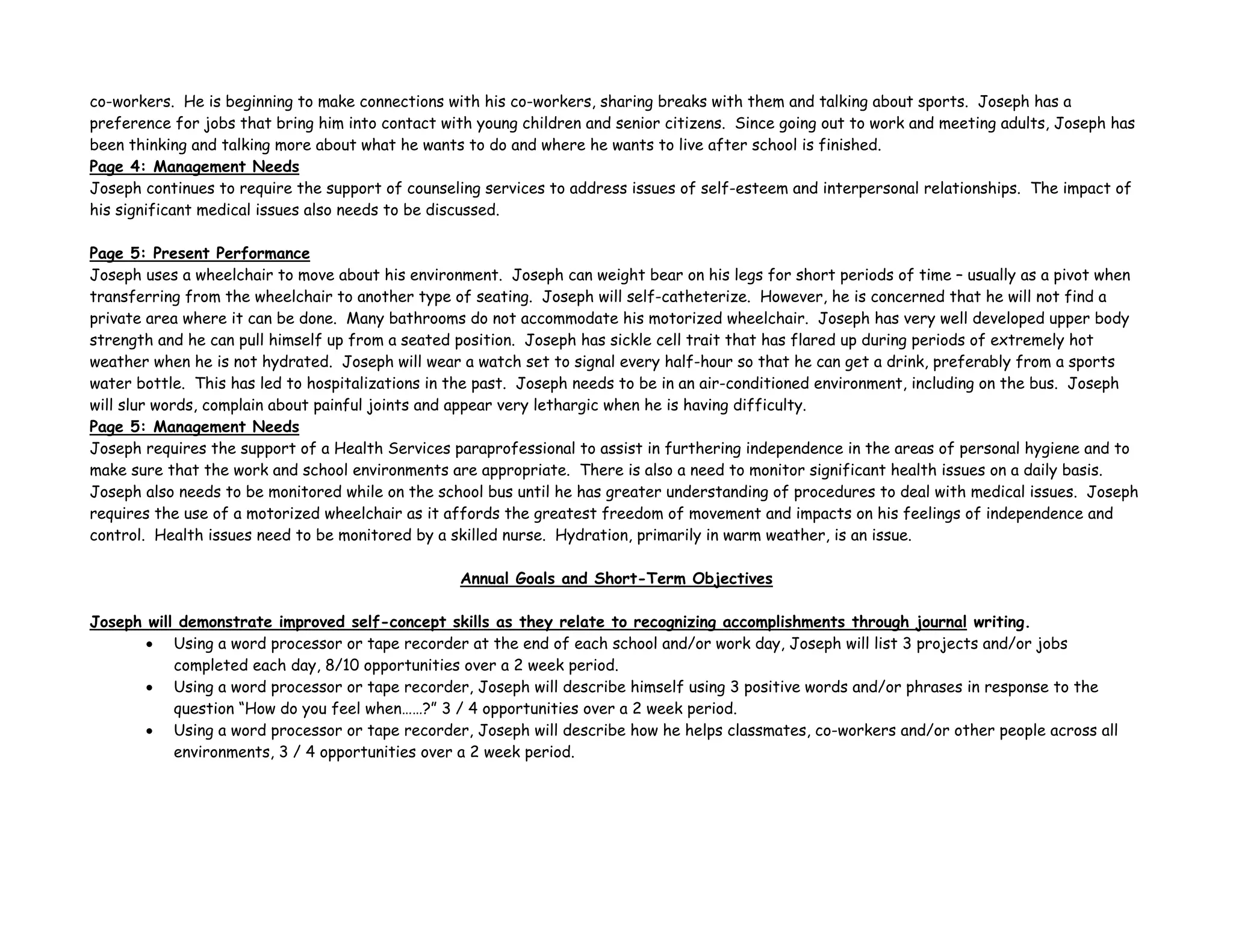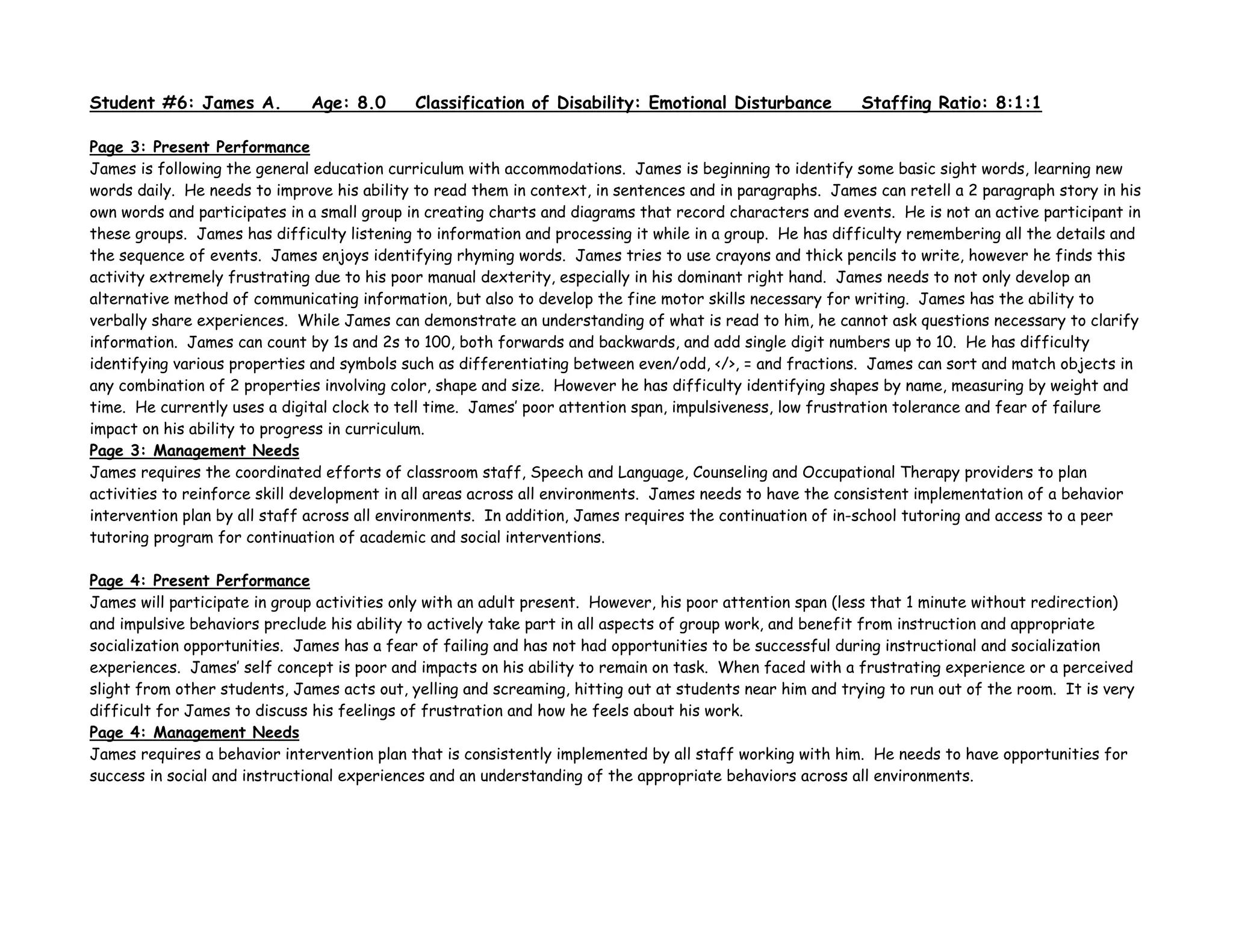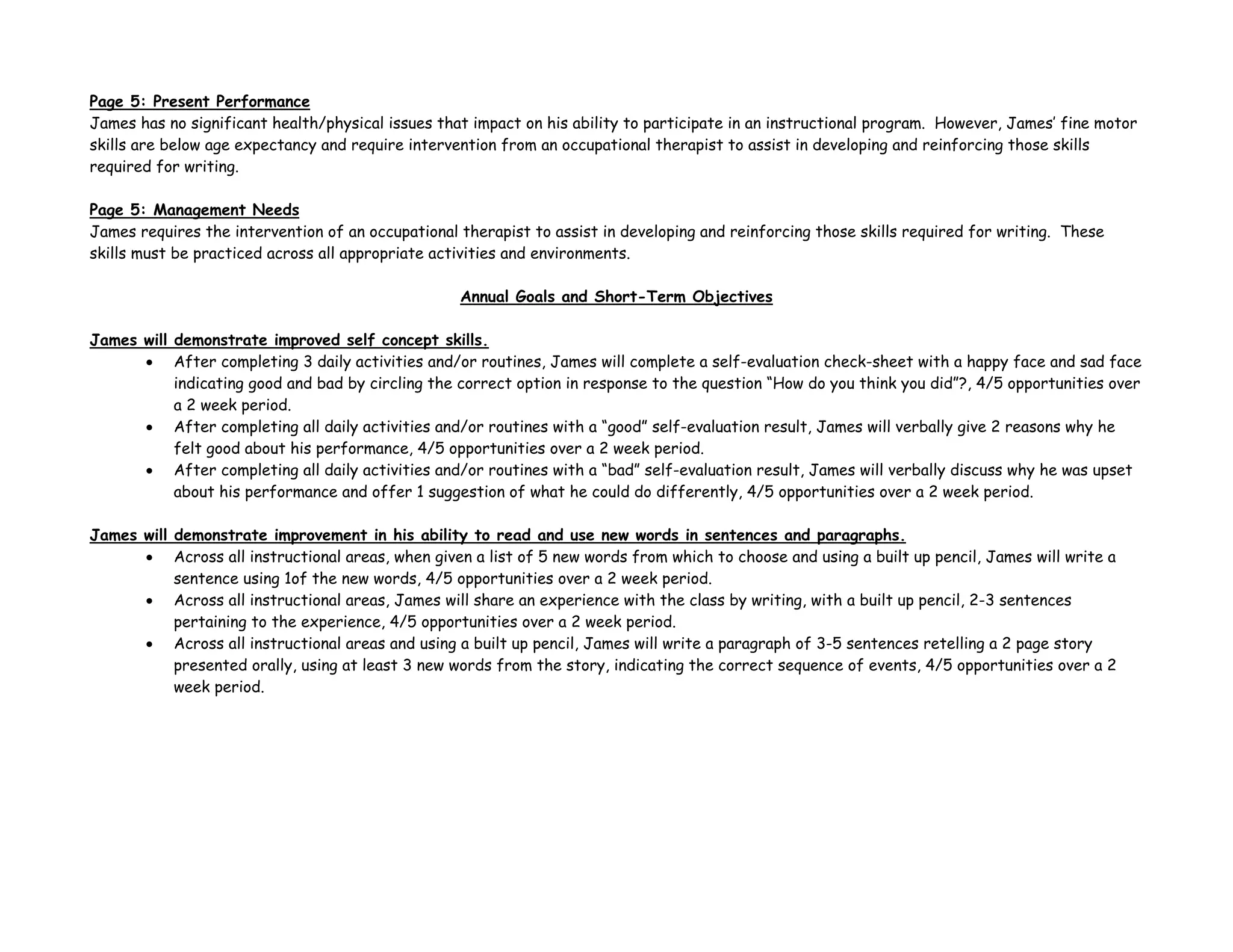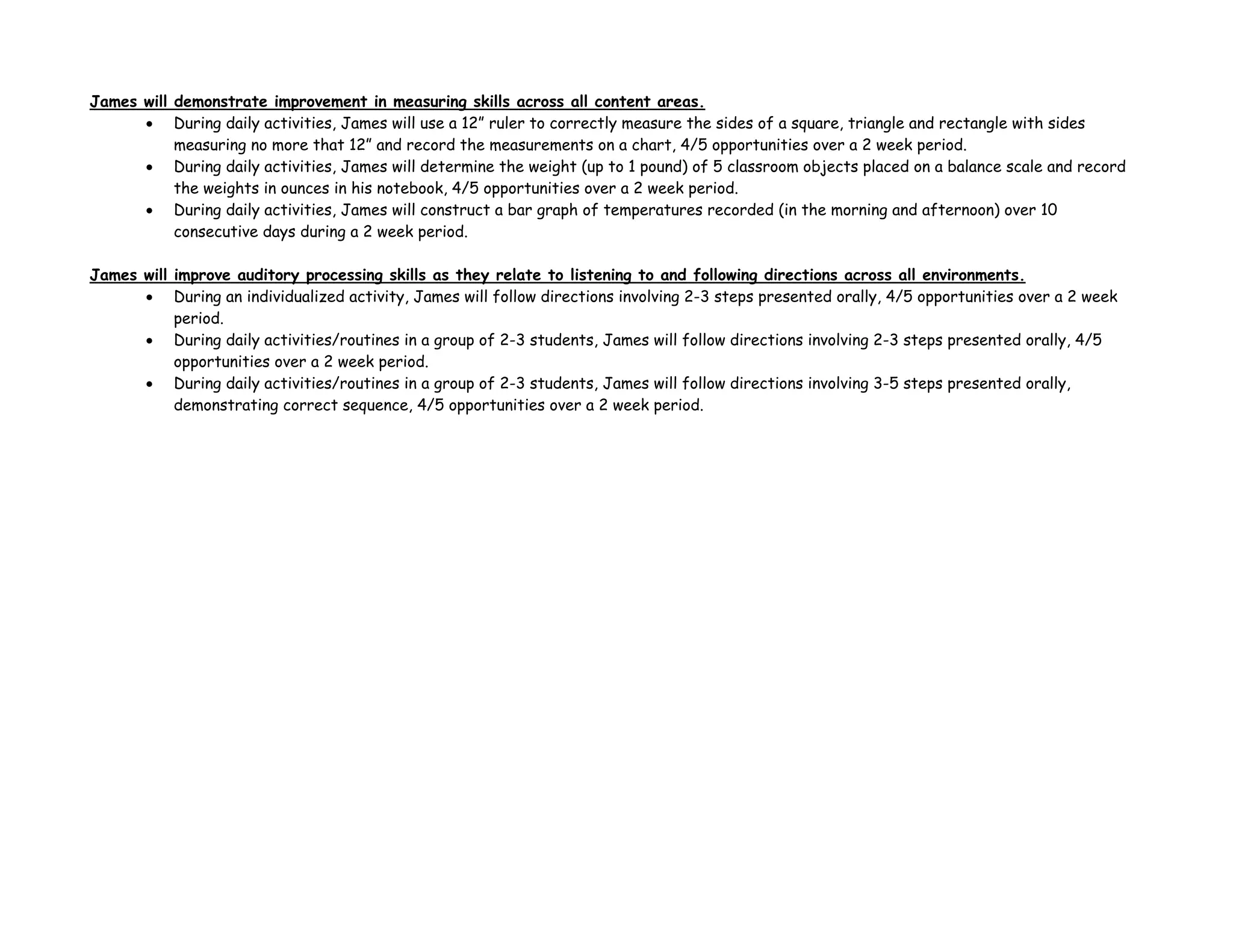John is a 7-year-old student with multiple disabilities including visual impairment, mental retardation, and orthopedic impairment. He communicates non-verbally and needs support to participate in activities. His goals are to improve drinking from a straw, grasping objects, communicating his wants/needs, and attending to tasks. Samantha is an 18-year-old student with mental retardation and other health issues. She uses a communication board. Her goals are to improve obtaining materials, independently completing tasks, and working in groups. Both students learn best with hands-on activities and require adapted equipment and consistent use of communication systems.
